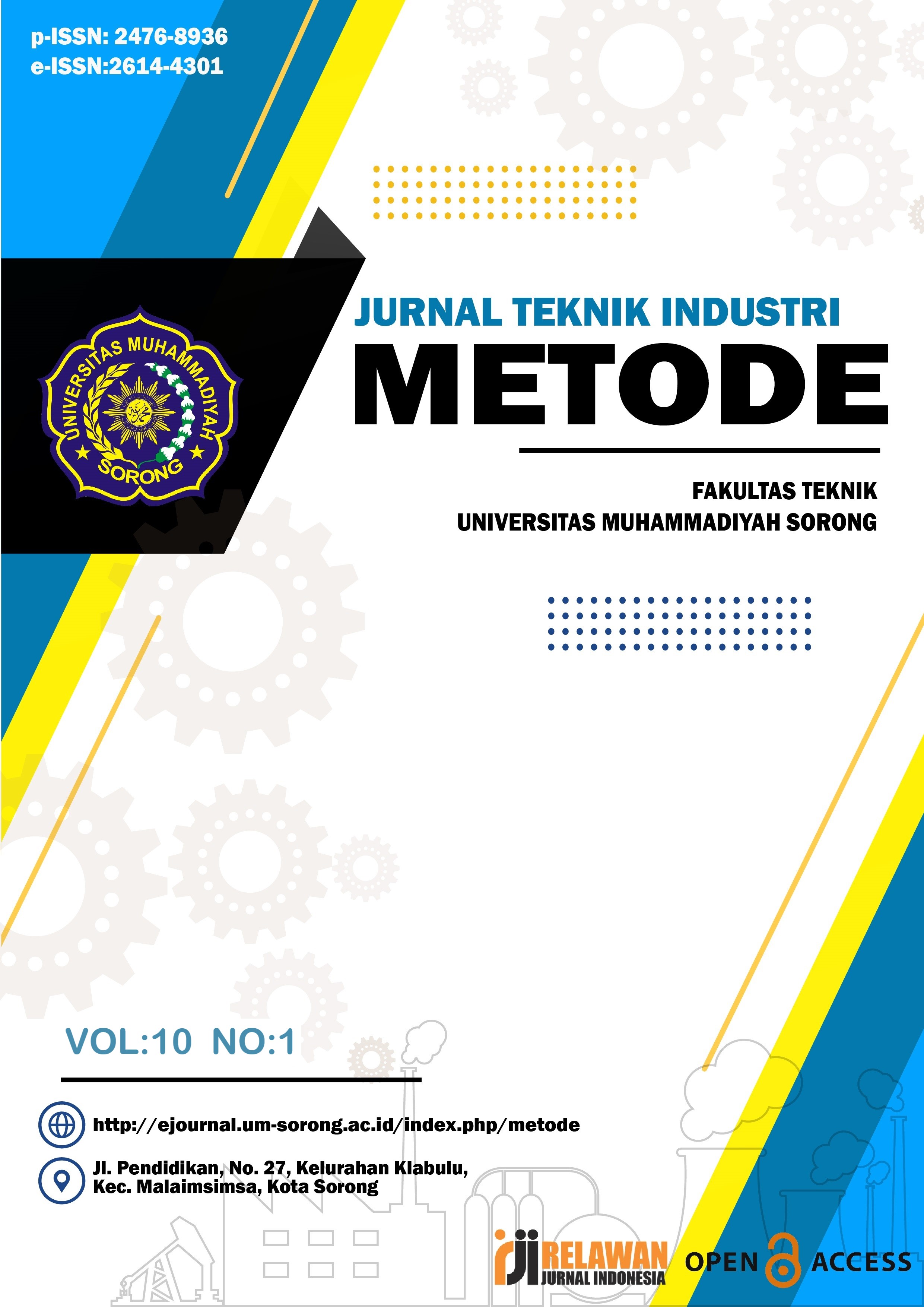Efforts to Reduce Defect Porosity at PT. EPI Uses the PDCA Method
Keywords:
conveyor, defect, PDCA, weldingAbstract
- Eratek Prima Indonesia is a company operating in the manufacturing industry, especially conveyor products. PT. Eratek Prima Indonesia produces the Conveyor Carousel type, which is a type of conveyor used to transport passenger luggage from the plane to the arrival hall at the airport. From the conveyor carrousel production data for August 2021 – January 2022, in the production department it was found that the most defects occurred in the welding process with the highest percentage of defects, namely porosity defects of 75%, which means it exceeds the allowance standard by less than 30%. Based on this data, it shows that a high percentage of defects can disrupt the production process and must be controlled. The method used to solve this problem is to use the PDCA method. PDCA is a useful tool for continuous improvement and FMEA is a tool frequently used in quality improvement methods. The results of this research are to reduce the volume of porosity defects. Improvement efforts made to reduce the volume of porosity defects are carrying out regular training to improve employee skills, cleaning the material to be welded, welders paying attention to the standard position of the welding wire, replacing welding handlebars that are worn out due to use. once every month. After the repairs were carried out, the results of the reduction in defect volume were now 29% in accordance with company standards.
References
Basuki. (2023). Upaya Peningkatan Kualitas Dengan Menggunakan Analisis Siklus PDCA Pada Perusahaan Otomotif. Metris, 9-16.
Cepi Kurniawan, H. H. (2018). Penerapan Metode PDCA Untuk Menurunkan Tingkat Kerusakan Mesin Pada Proses Produksi Penyalutan. Journal Of Industrial Enginering, Scientific Journal on Research, 105-118.
Dimas Raya, A. Y. (2020). Analisis Upaya Menurunkan Cacat Produk Crank Case LH Proses Die Casting dengan Metode PDCA dan FMEA di PT. Suzuki Indo Mobil. Journal Of Industrial and Engineering Sistem, 1-10.
Kartika, H. (2020). Penerapan Lean Kaizen Untuk Meningkatkan Produktivitas Line Painting Pada Bagian Produksi Automotive dengan Metode PDCA. Jurnal Sistem Teknik Industri, 22-32.
Muhammad Prasojo, G. M. (2020). Implementasi Metode PDCA dan Seven Tools Untuk Pengendalian Kualitas Pada Produk Sheet di PT. Kati Kartika Murni. JIMTEK, 195-210.
Sri Lestari, M. H. (2020). Pengendalian Kualitas Produk Compound AT 807 di Plant Mixing Center Dengan Metode Six Sigma Pada Perusahaan Ban di Jawa Barat. Jurnal Teknik, 46-52.
Tri Widodo, I. F. (2019). Implementasi Continuous Improvement Dengan Menggunakan Metode PDCA Pada Proses Handover di Warehouse PT. ABC. Journal Industrial Manufacturing, 37-44.
Vera Devani, T. A. (2021). Implementasi Peningkatan Kualitas Crumb Rubber Menggunakan Metode PDCA. Agrointek, 134-145.
Yudi Syahrullah, M. R. (2021). Integrasi FMEA dalam Penerapan Quality Control Circle (QCC) Untuk Perbaikan Kualitas Proses Produksi Pada Mesin Tenun Rapier. JRSI (Jurnal Rekayasa Sistem Industri), 78-85.
Yuniar Adekayanti, I. A. (2021). Analisis Gangguan Pada KWH Meter Pelanggan di PT. PLN (Persero) UP3 Sumbawa Menggunakan Fishbone dan PDCA. JITSA, 22-31.
Downloads
Published
How to Cite
Issue
Section
License
Copyright (c) 2024 Saryanto Saryanto, Meri Prasetyawati Meri Prasetyawati, Renty Anugerah MP, Leola Dewiyani, Wiwik Sudarwati

This work is licensed under a Creative Commons Attribution-ShareAlike 4.0 International License.









